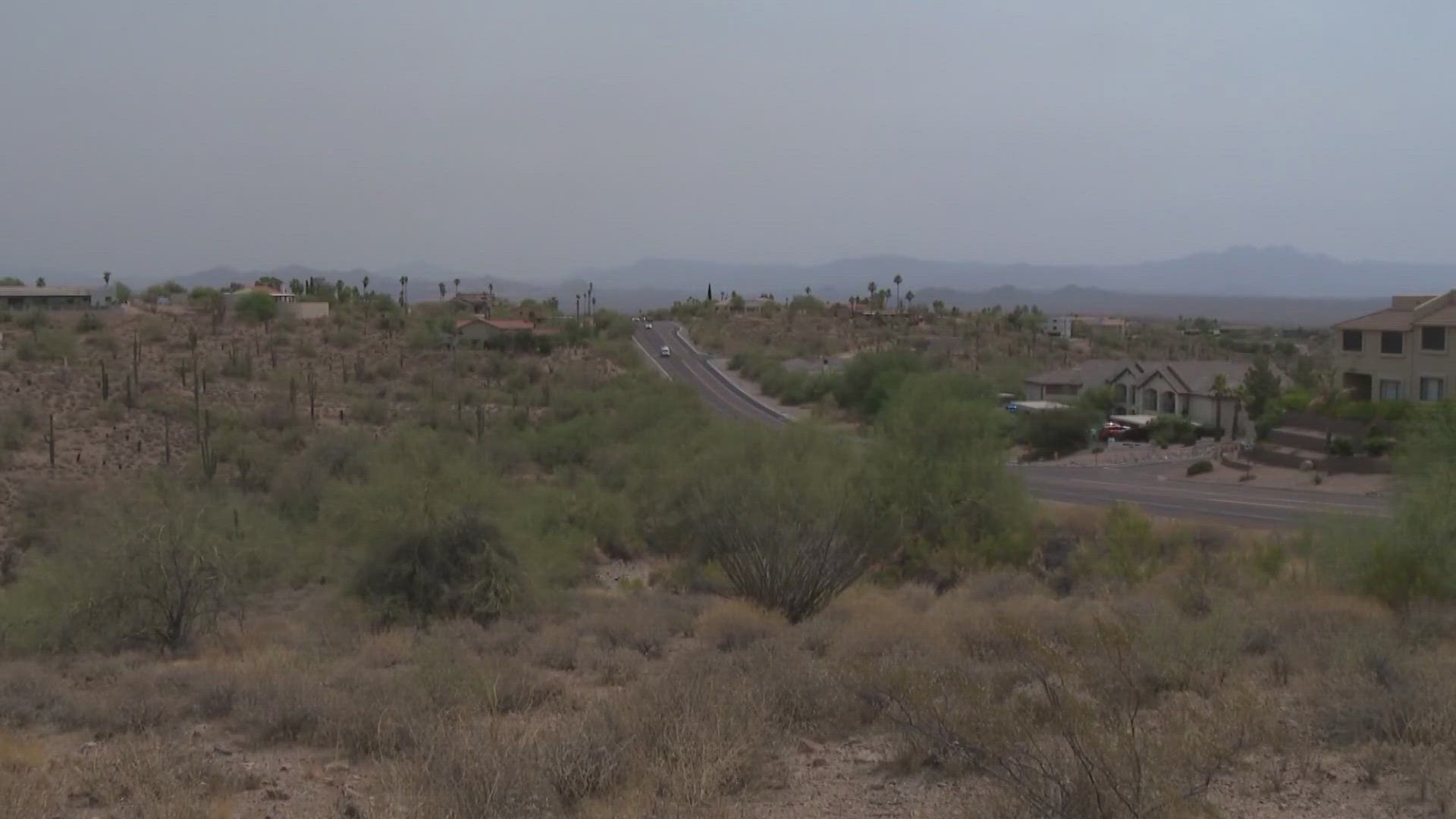PHOENIX — A GPS might be able to take you around a backup on the I-10 and the frigid air conditioning of a movie theater can help you find relief from a 115-degree Phoenix summer day, the infamously bad air quality of the Valley is something that can’t be avoided.
So much so, the American Lung Association ranked the Phoenix metro area fifth in the nation among the most ozone-polluted cities.
Now, a study out of Arizona State University is looking to better understand precursors to ozone to better the Valley’s air quality.
“In the Phoenix area we are in violation of ozone standards,” Pierre Herckes, Professor at ASU’s School of Molecular Sciences, said. “And so a question is, ‘What can we do against it?’”
Ozone forms in the air with three components: Sunlight, nitrogen oxides - like vehicle combustion - and volatile organic compounds, known as VOCs.
Herckes describes VOCs as gas molecules that have a smell.
“Anytime you smell something, chances are that these are VOCs,” Herckes said.
Those ozone precursors have human sources like gasoline, beauty products and deodorants. In addition, VOCs can come from natural sources like plants.
It’s the natural components that researchers at ASU are hoping to better understand through the study funded by a grant from the Arizona Board of Regents.
Herckes and Matthew Fraser are leading the study with PhD student researchers Trinity Olguin and Gabby Cano.
Specifically, the study is looking at how the VOCs change with the increase in temperature in a Valley summer.
“We can kind of control regulations - human sources, but we cannot really control biogenic sources,” Herckes said. “I mean, nobody would really propose to cut down all the trees or get rid of all the vegetation.”
It’s something that hasn’t been studied in Phoenix or any climate like it, the researchers say.
“The amount of gasses that get released from natural systems like vegetation and other plants changes with temperature,” Olguin said. “The question we’re that we’re asking is: ‘How does that change when the temperatures are really, really hot? Because we haven’t measured those.”
The researchers are doing that now, installing equipment in three spots throughout the Valley to measure VOCs 24 hours a day.
The measurements have been completed in a west Phoenix neighborhood. In July, the team’s trailer with instruments gathered measurements in a more natural desert area in Mesa. When the measurements are completed there, the team will test at an agricultural site.
“Different plants emit different things and so native desert plant species might emit completely different things from a huge agricultural field and all three of those things are very present in the Phoenix and Valley,” Olguin said.
The researchers are hoping to use the measurements to offer better recommendations to address air quality in the Valley by knowing how big of a contribution natural VOCs are to ozone in the Valley.
“This can help us address air pollution, not by getting rid of all the plants or the trees, but understanding the factors that we cannot control to better understand on which factors that we can control we should act upon,” Herckes said.
Watch 12News+ for free
You can now watch 12News content anytime, anywhere thanks to the 12News+ app!
The free 12News+ app from 12News lets users stream live events — including daily newscasts like "Today in AZ" and "12 News" and our daily lifestyle program, "Arizona Midday"—on Roku and Amazon Fire TV.
12News+ showcases live video throughout the day for breaking news, local news, weather and even an occasional moment of Zen showcasing breathtaking sights from across Arizona.
Users can also watch on-demand videos of top stories, local politics, I-Team investigations, Arizona-specific features and vintage videos from the 12News archives.
Roku: Add the channel from the Roku store or by searching for "12 News KPNX."
Amazon Fire TV: Search for "12 News KPNX" to find the free 12News+ app to add to your account, or have the 12News+ app delivered directly to your Amazon Fire TV through Amazon.com or the Amazon app.

